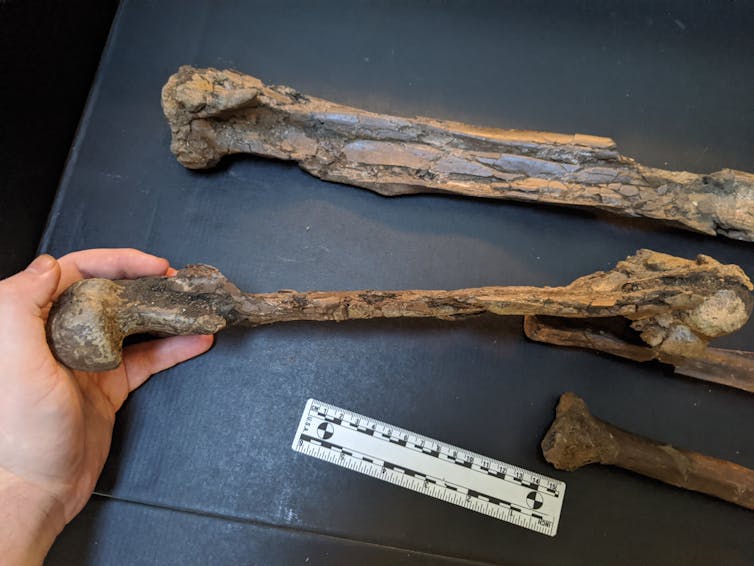# Hell Chicken Discovery Could Tell Us Just How Doomed The Dinosaurs Were
Were dinosaurs already on their way out when an asteroid hit Earth 66 million years ago, ending the Cretaceous, the geologic period that started about 145 million years ago? It’s a question that has vexed paleontologists like us for more than 40 years.
## What Happened Before the Asteroid Hit?
The late 1970s sparked a debate about whether dinosaurs were at their peak or in decline before their mass extinction. While dinosaur diversity appeared to have surged in the geologic stage spanning 83.6 million to 71.2 million years ago, the number of species seemed to decrease during the last few million years of the Cretaceous.
Some scientists believe that the asteroid that struck the Gulf of Mexico was simply the final blow for an already vulnerable group of animals. However, other researchers have argued that the apparent decrease in dinosaur diversity may be due to the challenges in accurately counting them. Factors such as fossil preservation and access to certain outcrops can create biases in the fossils discovered.
## New Dinosaur Discoveries
Discovering, identifying, and describing new dinosaurs is essential for understanding the pre-asteroid dinosaur diversity. The examination of a specimen initially thought to be a juvenile of a known dinosaur species revealed that it was actually an adult from a completely new species. This suggests that there may be more species from this time period yet to be discovered – potentially even through the reclassification of existing fossils.
## Uncovering New Evidence
A recent study focused on four hindlimb bones unearthed in South Dakota, belonging to a group of birdlike dinosaurs known as the caenagnathids. These dinosaurs had toothless beaks, long legs, and short tails, and were covered in complex feathers.
The bones were initially assumed to belong to a juvenile of the known caenagnathid species Anzu. However, upon closer examination of the bone structures, it was revealed that the specimen was actually an adult of a new species, Eoneophron infernalis, with unique features distinguishing it from Anzu.
The examination of the bone structure also prompted a reevaluation of other fossils previously believed to be Anzu, leading to the identification of additional caenagnathid species from the same time and region.
## Implications of the Discoveries
This new evidence suggests that the caenagnathid dinosaur group was not declining in diversity at the end of the Cretaceous period. The findings also support the idea that the pattern of decreasing diversity may be influenced by sampling and preservation biases.
The discovery of Eoneophron infernalis provides further evidence that the caenagnathids were thriving before the catastrophic asteroid impact, shedding light on the dynamics of dinosaur populations leading up to their extinction. While many questions remain, the new species adds valuable insights to the ongoing debate about the decline and extinction of dinosaurs.
*The Conversation* This article is republished from The Conversation under a Creative Commons license. Read the original article.














